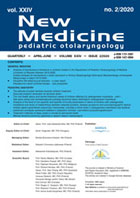Informed Consent
The author must have obtained, for all studies including human subjects, the permission of the subjects to be part of the study whilst keeping their anonymity. By sending the article, the author declares that he obtained this permission from all his subjects. It should also be stated in the Materials and Methods section that written informed consent was obtained from all the subjects.
It should also be underlined that, in case of clinical trials, the informed consent form should contain the nature of the procedure that the patient is to undergo, its risks and benefits, as well as the alternatives. It should be emphasized that the patient should not only have these facts communicated to him, but also he should understand it. Therefore, it can be said that informed consent in medical research is a process of communication between a clinician and the patient.
Photographs of identifiable persons require written permission of the person concerned. The autors are responsible for obtaining and storing the consent. All regions that may allow the identification of the subject must be covered. If consent has not been obtained, it is generally not sufficient to anonymize a photograph simply by using eye bars or blurring the face of the individual concerned. Formal consents are not required for the use of entirely anonymized images from which the individual cannot be identified- for example, x-rays, ultrasound images, pathology slides or laparoscopic images, provided that these do not contain any identifying marks and are not accompanied by text that might identify the individual concerned.









